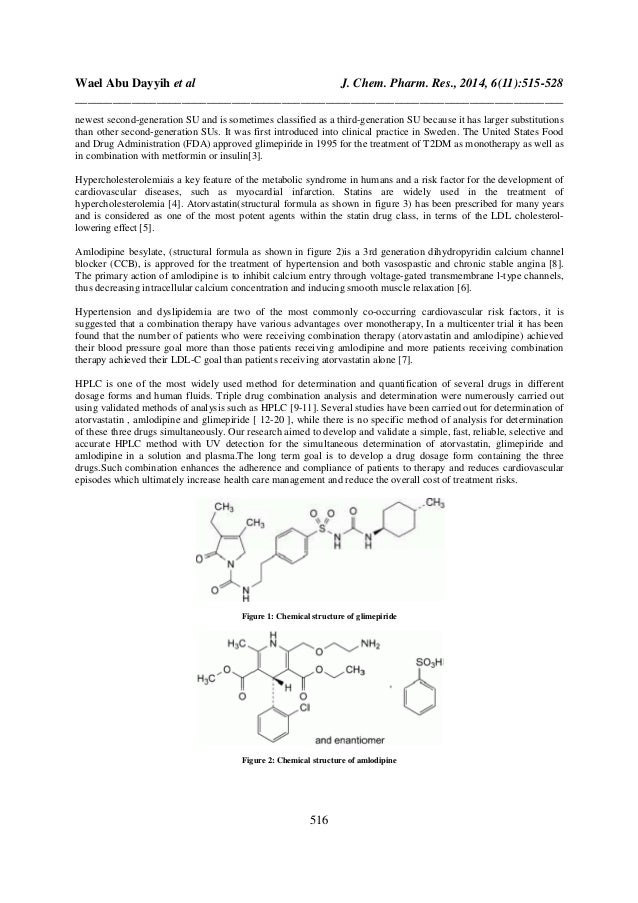Key Feature Of Most 3rd Generation Therapies
Jan 13, 2002 'This is a generation of psychological kids,' he says. 'We were really brought up with the idea that you go and get help and talk out your ideas.' Those who rank among the most pessimistic. Although CD20-targeted therapy with rituximab has greatly enhanced the outcome of patients with B-cell malignancies, resistance to rituximab is still a major problem, resulting in non-response and early relapse of disease. Second- and third-generation anti-CD20 MoAbs have been developed to. Alternative Therapies in Health and Medicine (ATHM) is an international scientific forum for the dissemination of peer-reviewed information indexed in the National Library of Medicine to healthcare professionals regarding the use of complementary and alternative therapies in promoting health and healing. Downstream effects, such as fibrosis (reviewed in ), inflammation (reviewed in ), and the generation of reactive oxygen species , , also seem to play key roles in pathogenesis. Pathogenic mechanisms of Fabry disease are discussed briefly below. Jun 26, 2018 iversal feature of unlimited growth, sometimes invasive and remote metastasis ( 100 different pathogenic types). Individualized cancer therapies/personalized cancer therapies (ICT/PCT) are.
The approaches of the first two generations of Behavioral Therapy (BT) share the assumption that certain cognitions, emotions and physiological states lead to dysfunctional behavior and, therefore, therapeutic intervention is aimed at eliminating, or at least reducing, these problematic internal events. Third wave therapies are expanding their targets from the mere reduction of symptoms to the development of skills aimed at significantly improving the quality and quantity of activity in which the patient finds value. Even with seriously ill patients, the new behavioral therapies emphasize empowerment and increase in skills and behavioral repertoires that may be used in many contexts (Hayes, 2004).
The emphasis on building healthy behavioral skills, finds its rationale in the assumption that the processes which the patient fights against constantly (judging and attempting to control their internal experiences) are the same as those experienced by the therapist (Hayes, 2004); resulting in the fact that the methods and techniques of these therapies are suitable as much for the therapists as they are for the patients. In efforts made by the patient to increase acceptance of their internal experiences, the therapist is encouraged to form a sincere rapport with the inner most experiences of the patient.

Another feature of these new treatments is to break some of the historical barriers between behavior therapy and the somewhat less scientifically based approaches (e.g. Psychoanalysis, Gestalt therapy and Humanistic therapies) trying to integrate some of their fundamental concepts.

If, for some, the above elements suggest the emergence of a new wave within the field of CBT, for others (e.g. Leahy, 2008; Hofmann, 2008) it is neither a paradigm shift, nor do the therapies have features that confer any greater clinical efficacy. Whilst standard CBT meets the criteria of Empirically Supported Therapies (ESTs) — that is, therapies that have been proven effective through randomized controlled trials — for a wide variety of psychological disorders (Butler, 2006), currently we cannot say the same for the approaches seen in third-generation therapies (Öst, 2008).
Generate api key in magento 1.9. Strong supporting evidence that Acceptance and Commitment Therapy (ACT), one of the most studied third wave approaches, is more effective than Cognitive Therapy is for the most part lacking and, when present, is derived from studies that have severe limitations, such as a small sample size or the use of non-clinical samples (Forman, 2007). So the doubt remains whether the third generation therapies actually represent a “new” wave in CBT. Keeping this is mind; it may be interesting to reflect on commonalities and differences between the third generation and the previous two generations.
The first generation’s exposure techniques were one of the most effective tools in the arsenal of CBT. Even though the underlying mechanism for this has yet to be fully understood (Steketee, 2002; Rachman, 1991), the rationale behind exposure techniques are reminiscent of the extinction processes of avoidance responses through the activation of habituation processes to the stimulus, with a progressive reduction and eventual disappearance of the physiological and behavioral reactions associated with them so that the patient learns to cope with the emotions triggered by the feared situations without resorting to avoidance behaviors.
Since experiential avoidance is a central target in third wave approaches, exposure therapy is undoubtedly still widely used; However, although third generation approaches can be similar to those of the previous generations, in terms of exposure techniques, the rational and objectives are different. Patients, in fact, are helped to identify what really matters in their lives and to engage in actions that are in line with these aims and values.
It is inevitable that such techniques may elicit unpleasant thoughts, emotions and physiological sensations, resulting in the impulse to avoid the experiential event. Therefore, third generation approaches are intended to reduce the avoidance behavior and increase the patient’s behavioral repertoire, however not necessarily extinguishing the internal responses (even though the process of extinction may well take place), but accepting them for what are without going against them.
The role attributed to life experiences in helping to create the content of thoughts is a similar concept in both second and third generations, but then there are radical differences with respect to the importance attributed to thought content in the creation and maintenance of psychological disturbances. Starting with the assumption that a stimulus can affect the emotions of a patient only as a consequence of how that emotion is processed and interpreted by his cognitive system, cognitive therapies aim to bring about a change in the patient through the correction of the content of his dysfunctional thoughts; in contrast, third wave therapies state that an excessive focus on the content of thoughts may contribute to worsening of symptoms. Leahy (2008) criticizes this position, citing the amount of empirical research supporting the greater efficacy of cognitive psychotherapy when compared to any other therapeutic approach. On the other hand, while reflecting on the new elements of the third generation, Leahy (2008) admits that the techniques which bring about distancing from ones thoughts through acceptance and mindfulness do not differ significantly from the process of critical thinking, which is the technique used in the cognitive approach.
In conclusion, standard cognitive therapy, which aims to modify the content of thoughts, may hinder the patient’s acceptance of internal experiences; the solution to which has been proposed through the methods and approaches of the third wave. These approaches put forward the idea of changing the patient’s relationship with their own internal events, a process that can be integrated into standard CBT (Hayes, 1999, and Segal, 2002).
Conclusion
Thirty years ago the cognitive behavioral approach to therapy was limited to the treatment of major depressive disorder and a very limited treatment for some anxiety disorders. Most practitioners at that time viewed this approach as rather simplistic, but admittedly effective for a small range of problems. The “deeper” and more “challenging” cases would be the focus for “depth” therapies of various kinds. Although those “depth” therapies provided little evidence of any effectiveness, they were seen as addressing the “real underlying problems.”
Psychotherapy has come a long way since then. As we have seen above, the cognitive behavioral approach to therapy provides an effective treatment modality for the full range of psychiatric disorders. This approach empowers the clinician to provide effective treatment for depression, generalized anxiety, panic disorder, obsessive-compulsive disorder, social anxiety disorder, PTSD, bipolar disorder, schizophrenia, eating disorders, body dysmorphic disorder, couples problems and family therapy issues. Indeed, where medication is part of the treatment approach, CBT increases medication compliance, resulting in a better outcome for patients with severe mental illness. The emergence of case conceptualization and schematic models of personality disorder has provided the clinician with the tools to help patients with longstanding, apparently intractable personality disorders.
Although psychodynamic theorists may still argue that CBT does not address the deeper issues, cognitive behavior therapists argue that CBT does deal with the deeper issues — only, it is done more rapidly and more effectively. New research that indicates that CBT can be effective with patients suffering from borderline personality disorder illustrates the power of case conceptualization within a structured proactive approach. Moreover, the treatment approaches of CBT are not simply derived from clinical lore and convenient anecdotes. Each structured treatment modality is supported by significant empirical research demonstrating its effectiveness.
References
Forman, E. M., Herbert, J. D., Moitra, E., Yeomans, P. D., & Geller, P. A. (2007). A randomized controlled effectiveness trial of acceptance and commitment therapy and cognitive therapy for anxiety and depression. Behavior Modification, 31, 762-799
Hayes, S. C. (2004). Acceptance and commitment therapy, relational frame theory, and the third wave of behavioral and cognitive therapies. Behavior Therapy, 35, 638-665.
Hayes S. C., Masuda, A., Bissett, R., Luoma, J., & Gueffero, L. F. (2004). DBT, FAP, and ACT: How empirically oriented are the new behavior therapy technologies? Behavior Therapy, 35, 33-54.
Hayes, S. C., Wilson, K. G., Gifford, E. V., Follette, V. M., & Strosahl, K. (1996). Experiential avoidance and behavioral disorders: A functional dimensional approach to diagnosis and treatment. Journal of Consulting and Clinical Psychology, 64, 1151-1168.
Hofmann, S. G., & Asmundson, G. J. (2008). Acceptance and mindfulness-based therapy: New wave or old hat? Clinical Psychology Review, 28(1), 2-16.
Leahy, R. L. (2007). Emotion and psychotherapy. Clinical Psychology: Science ad Practice, 14, 351-357.
Leahy, R. L. (2008). A closer look at ACT. The Behavior Therapist, 31(8), 147-150.
Öst, L. G. (2008). Efficacy of the third wave of behavioral therapies: A systematic review and meta analysis. Behavior Research and Therapy, 46, 295-321.
Key Feature Of Most 3rd Generation Therapies In Nursing
Segal, Z. V., Williams, J. M., & Teasdale, J. D. (2002). Mindfulness-based cognitive therapy for depression: A new approach for preventing relapse. New York: Guilford Press.
Steketee, G. S., & Barlow, D. H. (2002). Obsessive-compulsive disorder. In D. H. Barlow (Ed.), Anxiety and its disorders: The nature and treatment of anxiety and panic (2nd ed., pp. 515-551). New York: Guilford.
Key Feature Of Most 3rd Generation Therapies List
Teasdale, J. D. (2003). Mindfulness training and problem formulation. Clinical Psychology: Science and Practice, 10(2), 156-160.



